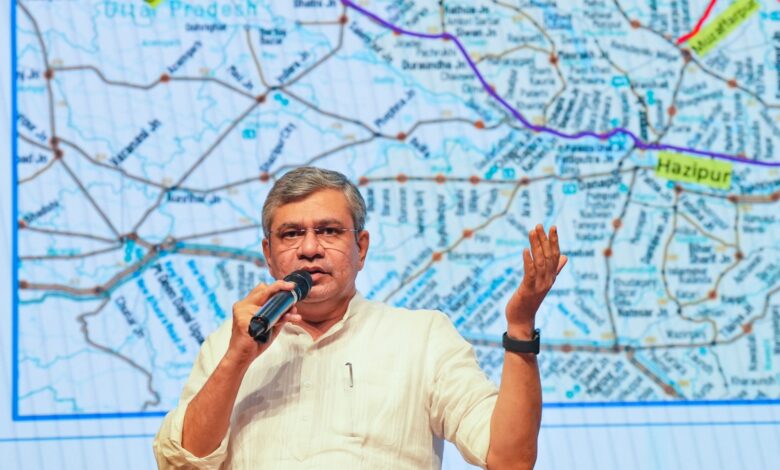Cabinet Approves Rs 6,798 Crore Railway Projects to Boost Connectivity and Economic Growth

The Cabinet Committee on Economic Affairs (CCEA), led by Prime Minister Narendra Modi, has approved two major railway projects with a total estimated investment of Rs 6,798 crore. These projects are expected to enhance connectivity, facilitate easier travel, minimize logistics costs, and reduce oil imports while contributing to lower carbon dioxide emissions.
The approved initiatives include the doubling of the railway line from Narkatiaganj to Raxaul, Sitamarhi, and Darbhanga, along with the Sitamarhi-Muzaffarpur section, covering a total of 256 kilometers. Additionally, a new line will be constructed between Errupalem and Namburu via Amaravati, extending 57 kilometers. Both projects are slated for completion within five years and are anticipated to create approximately 106 lakh human-days of direct employment.
Enhanced Connectivity and Economic Impact
The doubling of the Narkatiaganj-Raxaul-Sitamarhi-Darbhanga line is particularly significant for improving connectivity to Nepal, Northeast India, and border areas. This enhancement will facilitate the movement of both passenger and freight trains, promoting socio-economic development in the region.
The new Errupalem-Amaravati-Namburu line will pass through the NTR Vijayawada and Guntur districts of Andhra Pradesh, as well as Khammam district in Telangana. Together, these projects will span eight districts across three states: Andhra Pradesh, Telangana, and Bihar, increasing the Indian Railways’ network by approximately 313 kilometers.
The new line is expected to connect around 168 villages and serve a population of about 1.2 million through the establishment of nine new stations. Meanwhile, the multi-tracking initiative will enhance connectivity in two aspirational districts—Sitamarhi and Muzaffarpur—benefiting approximately 388 villages and 900,000 residents.
These railway routes are crucial for transporting essential commodities, including agricultural products, fertilizers, coal, iron ore, steel, and cement. The planned capacity augmentation is projected to generate an additional freight traffic of 31 million tonnes per annum (MTPA), significantly boosting the logistics sector.
Environmental Benefits and Climate Goals
The railway projects align with India’s commitment to environmental sustainability. Rail transport is recognized as an eco-friendly and energy-efficient mode of transportation. The implementation of these projects is expected to reduce carbon dioxide emissions by 168 crore kilograms, which is equivalent to the environmental benefit of planting approximately 70 million trees.
The new line will provide direct access to Amaravati, the proposed capital of Andhra Pradesh, enhancing mobility for both industries and residents. This improvement in infrastructure will also enhance the efficiency and reliability of Indian Railways services.
Aligning with National Vision and Development Goals
These projects reflect Prime Minister Modi’s vision of a New India, aiming to make regional populations more self-reliant through comprehensive development. The expected enhancements in employment and self-employment opportunities are pivotal for the local economy.
Furthermore, these initiatives are part of the PM-Gati Shakti National Master Plan, which aims to promote multi-modal connectivity through integrated planning. By ensuring seamless transportation of people, goods, and services, the projects are expected to bolster economic growth and improve living standards in the regions they serve.
Conclusion
The approval of these railway projects marks a significant step towards enhancing India’s transportation infrastructure. By improving connectivity and facilitating the movement of essential goods, the projects will not only stimulate local economies but also contribute to the country’s broader environmental goals. As the projects unfold over the next five years, they promise to transform the railway landscape in the targeted states, driving socio-economic growth and fostering a more connected and sustainable future.




